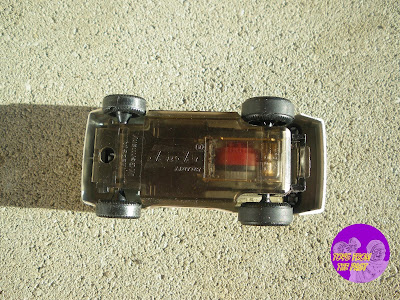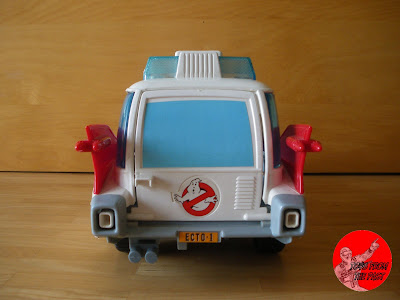 Hasbro created one of the most successful lines in the history of toys. I think I have already commented, that the peak of popularity of G.I. Joe is located somewhere between 1987, 1988 and 1989. Hasbro obviously wanted to extend the lifespan of this collection, that so many million dollars was producing worldwide. That’s why during the first years of existence, they introduced new subgroups of figures (like the “Dreadnocks” or the “Tiger Force”) to boost the G.I.Joe universum and the playing possibilities.
Until now, the figures released were normal figures, they included a few weapons like any other figure. In 1990, the first “special” groups are released:
Hasbro created one of the most successful lines in the history of toys. I think I have already commented, that the peak of popularity of G.I. Joe is located somewhere between 1987, 1988 and 1989. Hasbro obviously wanted to extend the lifespan of this collection, that so many million dollars was producing worldwide. That’s why during the first years of existence, they introduced new subgroups of figures (like the “Dreadnocks” or the “Tiger Force”) to boost the G.I.Joe universum and the playing possibilities.
Until now, the figures released were normal figures, they included a few weapons like any other figure. In 1990, the first “special” groups are released:
-one of the is the “Sky Patrol”, 6 G.I. Joe paratroopers including a backpack with a functional parachute (although the same parachute system was used in the mail-in Parachute pack form 1985),
-the second group was the “Sonic Fighters”, 6 figures (4 G.I. Joes & 2 Cobras) with a bunch of guns and a huge backpack with 4 electronic battle sounds each.
Both sets were based mostly in old casts that were repainted in other colours. In Spain some of these casts were available for the first time with those figures. I guess this second group of figures sold very well, even though the price was higher than the others, because Hasbro decided to launch 10 figures more the following year:
-six of them were the “Super Sonic Fighters” (4 G.I. Joes & 2 Cobras), very similar to the “Sonic Fighters”
-the rest (4: 2 G.I. Joes & 2 Cobras) are the ones in this article, and the difference is that they produce 1 battle sounds and 3 voice commands. They are made with completely new casts, and all of them include a figure stand, because it is very difficult to put them in a certain position due to the weight of the backpacks. Note that Overkill is one of the most original figures in the whole collection. Apart from the interchangeable hand accesories, it has a gun in his chest protected by a small door, something unique in the vintage ARAH collection (1982-1994).


The figures show no variant from one land to another, but their backpacks (which couldn't be removed like other backpacks as they were screwed to the back of the figures) speak at least two different languages. I did investigate about this topic, and I couldn't find any other language than English and Spanish. In the Netherlands, for example, UK carded figures (with english commands) were sold, which is probably the same that happened in France, Belgium, Italy and the rest of the countries in which the line was still being sold. This seem logical if we consider that the greatest market in Europe, after the United Kingdom was Spain.
Another point is that the Spanish figures have alternate names. Hasbro Spain probably thought (or maybe had noticed), that the second versions of already known characters wouldn’t sell (didn’t sell) that well. This way, the Cobra Commander was renamed “Commander” in Spain, and General Hawk was renamed “Falgass”. Stalker kept his original name, and Overkill changed it’s name to Barracuda, much easier to pronounce and to read in Spanish language.
These are the original (English) voice commands and the commands used in the Spanish version:
COBRA COMMANDER:
English Version:
- “I’ll Get You”
- “Cobra!”
- “Vipers Attack!”
Spanish version:
- “¡Oh, no!”
- “¡Me las pagarás!” (You’ll pay for this!)
- “¡Venceremos!” (We shall overcome!)
GENERAL HAWK:
English Version:
- “Eat Lead, Cobra!”
- “Yo Joe!”
- “Move Out!”
Spanish version:
- “¡Al Ataque!” (Attack!)
- “¡Cuidado!” (Watch Out!)
- “¡Misión Cumplida!” (Mission Accomplished!)
OVERKILL:
English Version:
- “B.A.T.S. Attack!”
- “Wipe Out!”
- “Destroy!”
Spanish version:
- “¡Viva Cupra!” (Long Live Cobra)
- “¡Nos Atacan!” (We are being attacked!)
- “¡Maldición!” (Curse!)
STALKER:
English Version:
- “Let’s Party!”
- “Attack!”
- “Blitz ‘Em!”
Spanish version:
- “¡G.I.Joe!” (pronounced in the “Spanish” way: “jee-joe!”)
- “¡Es una Trampa!” (It’s a trap!)
- “¡Adelante!” (Forward!)
If you’re not familiar with the G.I. Joe that were marketed in Spain, Cobra organisation was renamed “Cupra”.
These figures are relatively easy to find and are generally sold cheap. Spanish version are much more difficult to find, but I don’t think the language stuff is enough to be considered a variant, and to push collectors to find all international versions of these figures.

The cards are a little bit larger than the ones for normal figures, and the bubbles are bigger, due to the figure carrying the backpack. At the backpack, there is a small hole in which you could test the sounds before you bought the figures. Very interesting is the fact that the filecards of these characters differ quite a lot from the American/English version. If you can understand a little Spanish, you can click on the pictures and read the stories, you’ll notice that some facts have been ignored and some other information added. Just an example, Falgass'/General Hawk's file name has been changed to “Ferdy Sleeper”, probably just because it is mentioned in the card that he celebrated his promotion to commander by sleeping 20 hours that day :)
Most Spanish collectors find the translation/invention of the filecards quite annoying, I find them quite amusing.
Update: a promotional image taken from a Spanish catalogue:
FACTS AND FIGURES:
- Name: COBRA COMMANDER v5, GENERAL HAWK v2, OVERKILL, STALKER
- Alternative Names: COMMANDER, FALGASS, BARRACUDA, STALKER (Spanish)
- Toy Line: G.I.Joe (Wave 10)
- Year: 1991
- Company: Hasbro (U.S.A.)
- Size of the figures: 3¾’’ or 9,5 cm
 Hasbro created one of the most successful lines in the history of toys. I think I have already commented, that the peak of popularity of G.I. Joe is located somewhere between 1987, 1988 and 1989. Hasbro obviously wanted to extend the lifespan of this collection, that so many million dollars was producing worldwide. That’s why during the first years of existence, they introduced new subgroups of figures (like the “Dreadnocks” or the “Tiger Force”) to boost the G.I.Joe universum and the playing possibilities.
Hasbro created one of the most successful lines in the history of toys. I think I have already commented, that the peak of popularity of G.I. Joe is located somewhere between 1987, 1988 and 1989. Hasbro obviously wanted to extend the lifespan of this collection, that so many million dollars was producing worldwide. That’s why during the first years of existence, they introduced new subgroups of figures (like the “Dreadnocks” or the “Tiger Force”) to boost the G.I.Joe universum and the playing possibilities.
























































+%5B1600x1200%5D.jpg)